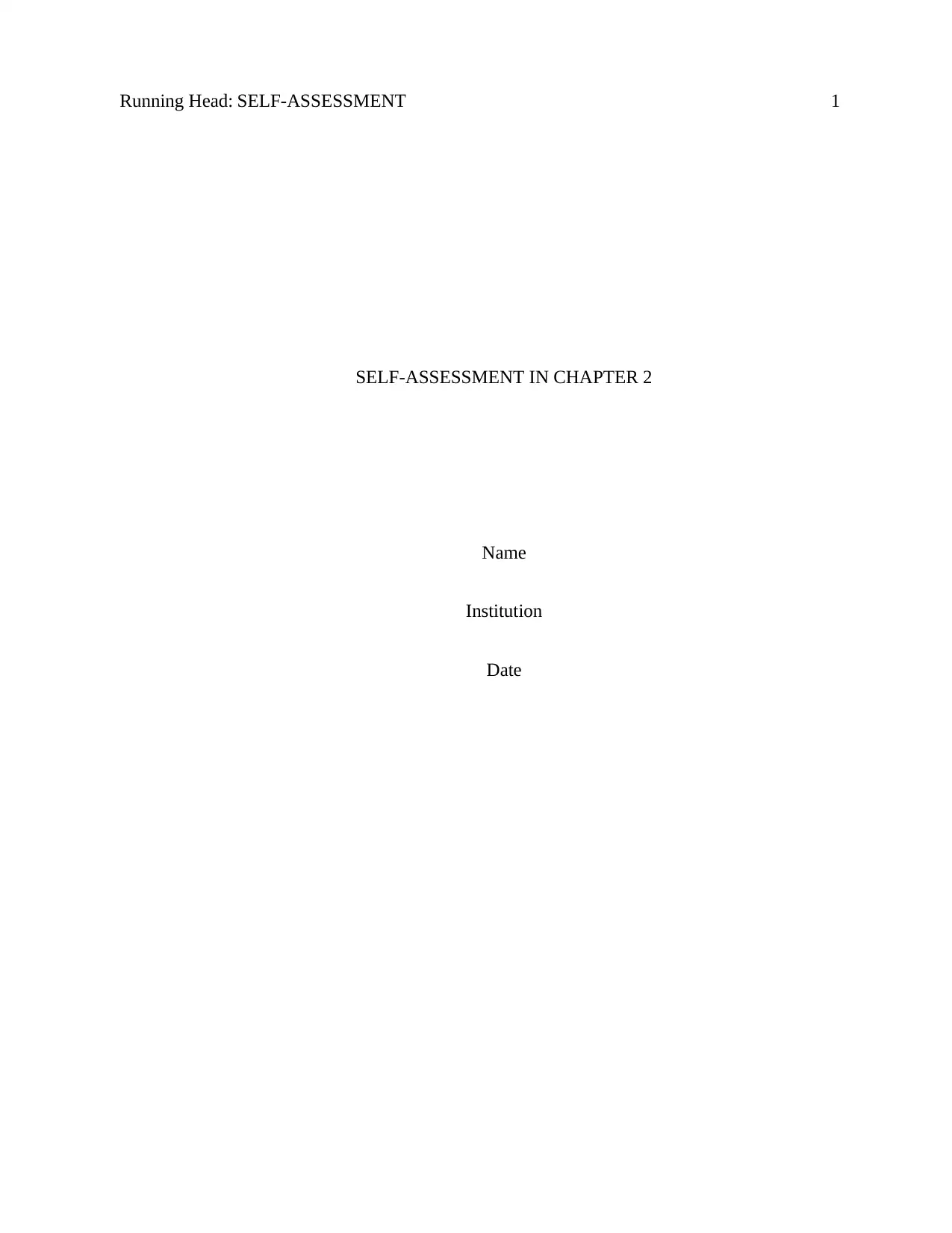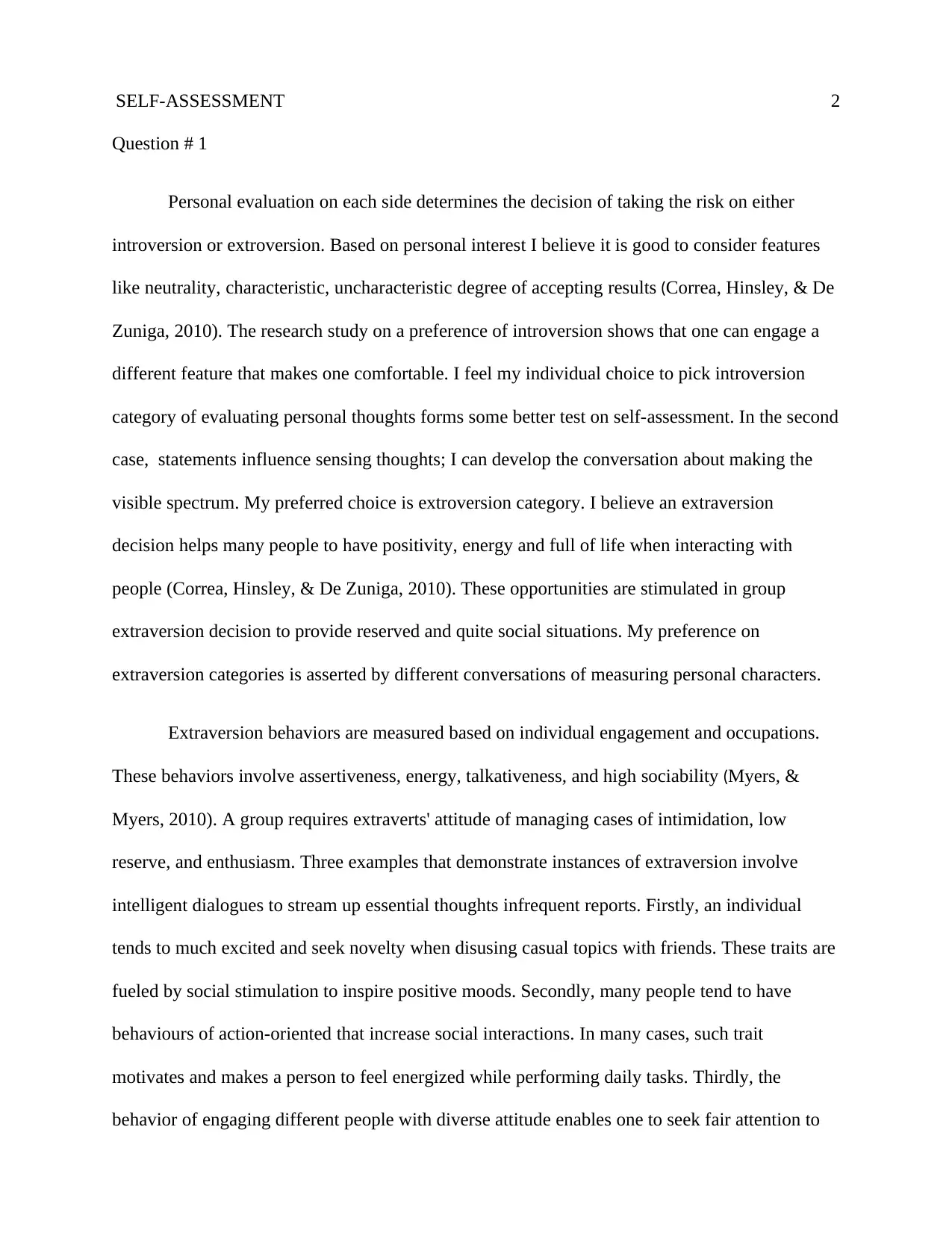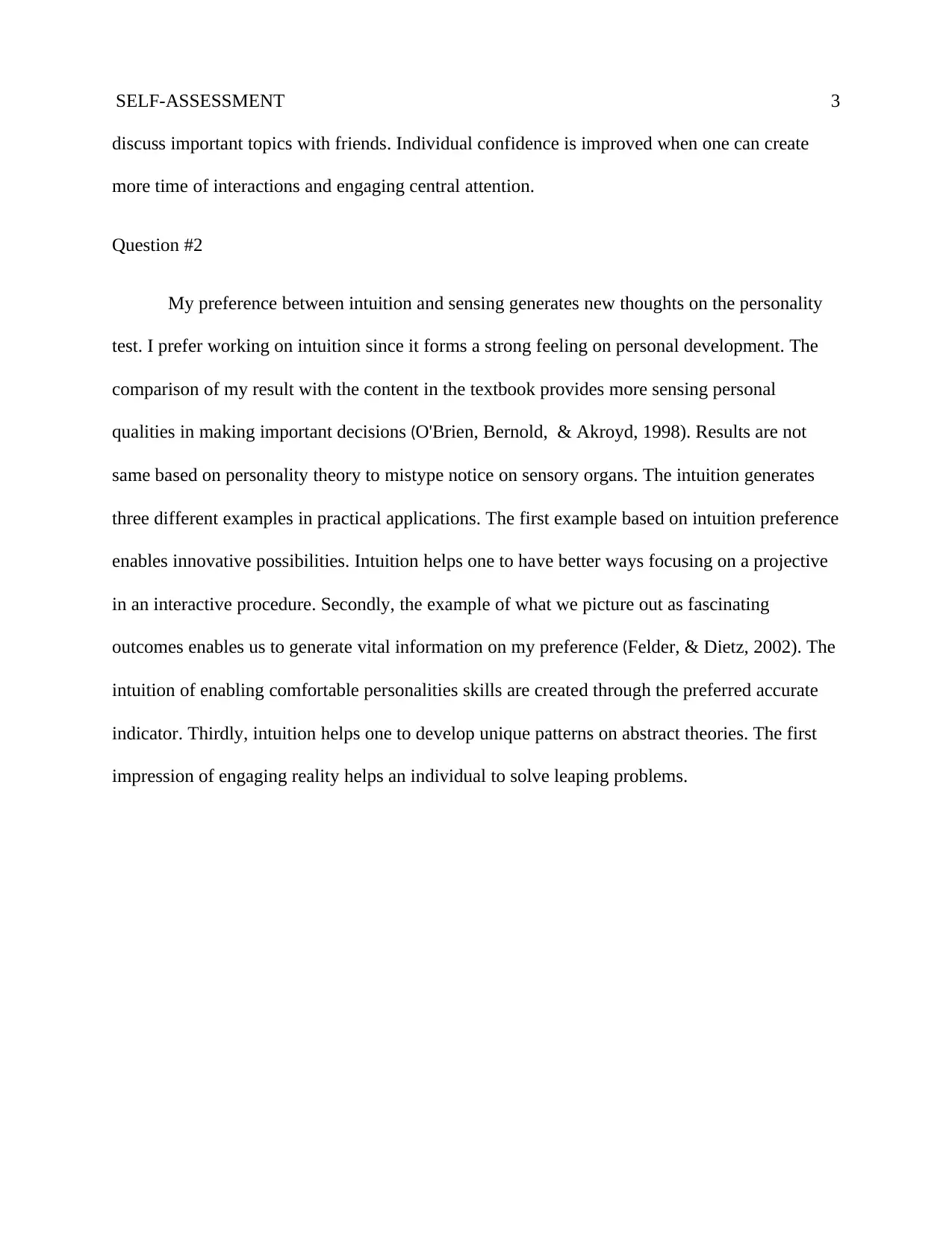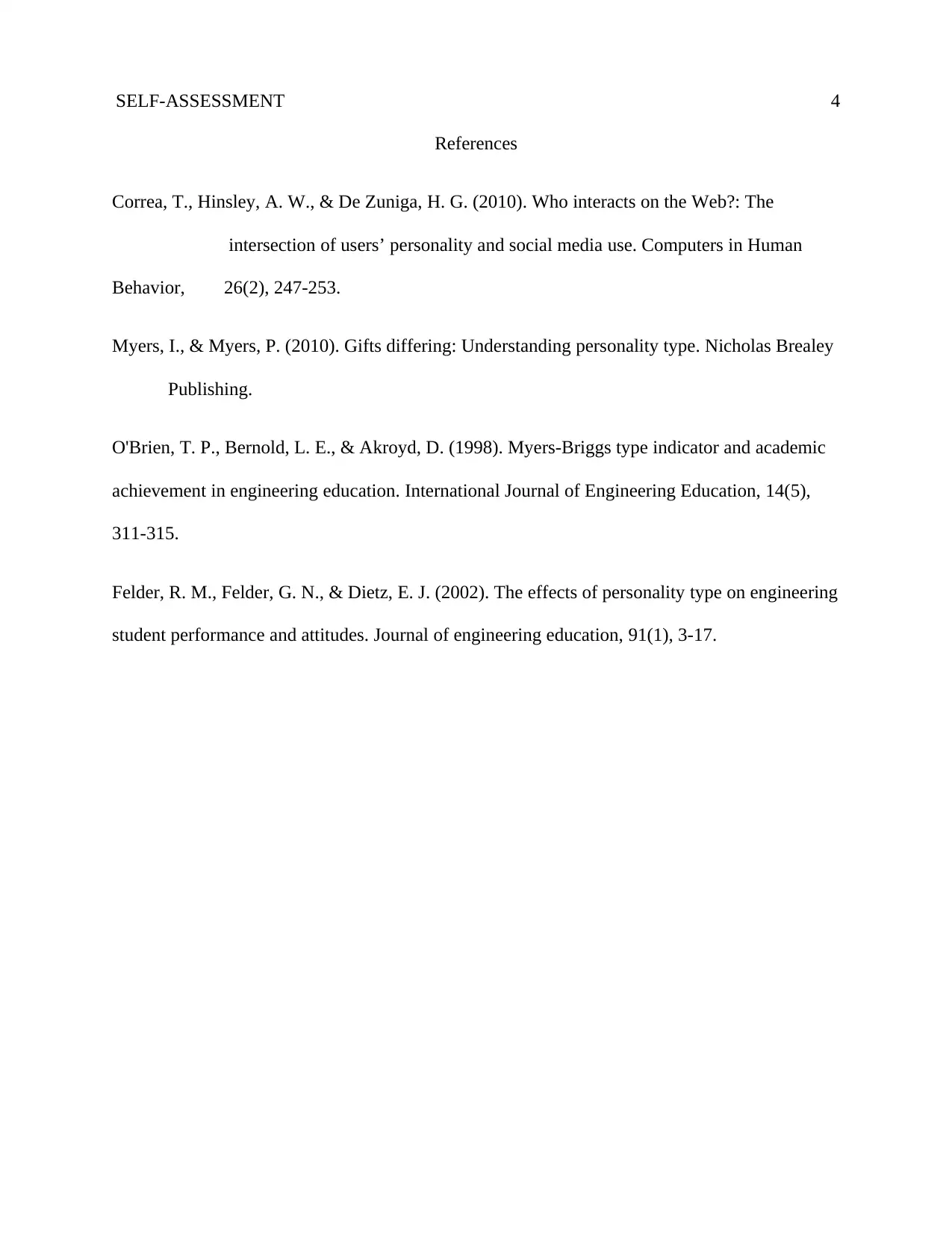Self-Assessment Homework: Introversion, Extroversion, and Intuition
VerifiedAdded on 2021/06/18
|4
|720
|24
Homework Assignment
AI Summary
This homework assignment presents a self-assessment exploring the student's preferences regarding introversion, extroversion, intuition, and sensing. The assignment addresses two key questions: the student's personal evaluation of introversion versus extroversion, and their preference between intuition and sensing. The student provides a detailed analysis of their choices, citing relevant research and providing examples to support their viewpoints. The response includes a discussion of how the student's choices reflect their personality traits and how these traits influence their decision-making processes. The assignment references academic sources to support the claims made about personality types and their impact on individual behavior and interactions, demonstrating an understanding of psychological concepts.
1 out of 4











![[object Object]](/_next/static/media/star-bottom.7253800d.svg)